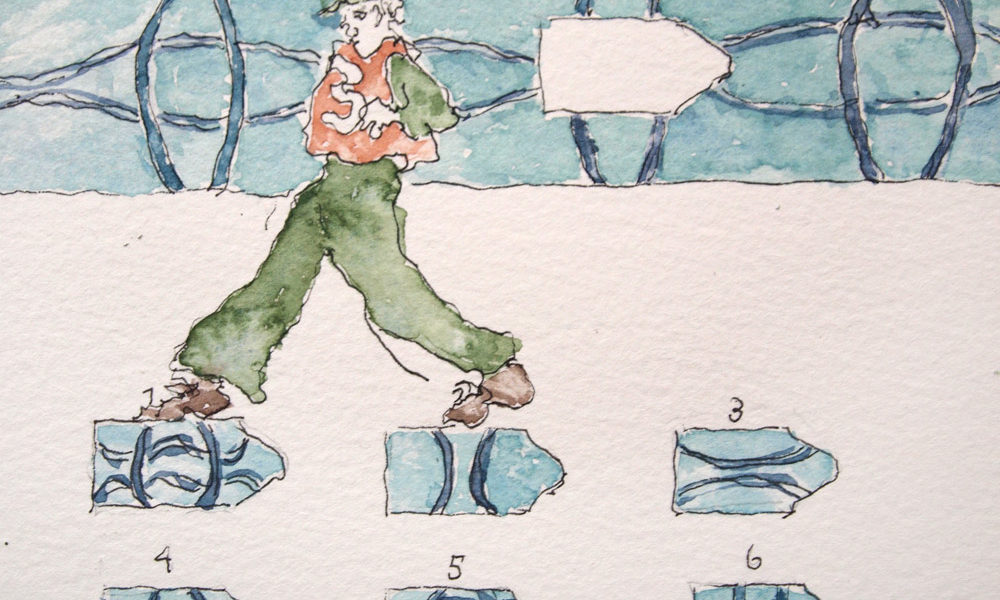
Testing times: What did it take to be a War Officer in WWII?
Why were psychological tests used in WWII for selecting war officers? How does going through the testing process make you feel?
Using materials uncovered in the Tavistock Institute archive, join us for a series of events to recreate war period psychology recruitment methods.
Test your mettle through a combination of individual and group tests, including word association, thematic apperception, and some moustaches that Henry Wellcome himself would have been jealous of.
Wednesday 16 November 15.00-17.00
Thursday 24 November 19.00-21.00
Friday 2 December 19.00-21.00
Thursday 15 December, 19.30-21.30
In the Reading Room, Wellcome Collection.
A discussion will follow to question, challenge, and debate how we ‘test’ in society, and what value testing has.
We hope to see you there to reflect on the history and contemporary use of psychology testing, the science of selecting soldiers in WWII, and the growth of social sciences in post-war Britain.
What’s it all about?
In 1942, psychiatrists from the Tavistock Group and soldiers in the British Army embarked upon an experiment to find a better way to choose leaders. Their work continues to have an impact on recruitment today.
Traditionally, Officers of the British Army came from wealthy families and private schools, and simply underwent a brief interview to be confirmed as “officer material”. But a couple of years into World War II, supply from this source was drying up and the British public were becoming dissatisfied with the method. With no experts on leadership to consult, the British Army turned to psychiatrists, experts on personality, to help them. In response to the “officer crisis”, they devised War Office Selection Boards (WOSBs): two and a half days of intelligence tests, psychological “pointers”, and group tests, followed by interviews.
Prime Minister Winston Churchill had a deep distrust of the psychiatrists and their tests, but early batches of candidates voiced unanimously positive opinions of the tests. During World War II, approximately 140,000 men passed through the WOSBs. The tests were used across the Commonwealth forces, borrowed and adapted by the American Office of Strategic Services (the predecessor to the CIA), and after the war were adapted for use in industry and Civil Service.
Though we’ve long known what the final tests were, and what soldiers thought of them, it’s only now that the Tavistock Institute archive is being catalogued that we’ve really been able to explore how the WOSBs tests were created. Some were trialled and discarded, some evolved and changed, and some options were literally too shocking to use…
For more information:
Come to Wellcome Library to explore the War Officer Selection papers for yourself. Browse the online catalogue using the reference SA/TIH/B/2/1/1 to discover this section of the Tavistock Institute archive.
Alice White, From the Science of Selection to Psychologising Civvy Street: The Tavistock Group, 1939-1948 https://kar.kent.ac.uk/55057/
You can also listen to Alice White’s lunchtime talk podcast, ‘what is restored to the picture by delving into the Tavistock archive?’, here.
Image credit: War Officer Material, watercolour on Langton paper, 148 x 105 mm by Juliet Scott
Hi
I have just fallen into this interesting area as more and more digitised records become available on the net. While researching my father’s role in the defeat of Hitler, I became more and more interested in the odds of his survival and my existence. Quite by chance I have discovered an elephant in the room which explains in part the demography of survival.
Essentially, he survived because he wasn’t a posh boy. He volunteered for aircrew training in 1939 at the age of 23 with good grades in the Higher School Cert, and was working in the City for a Merchant Bank and could obtain impeccable references from the great & good. He played in the first team of a first division RFU club . However, fate had placed him in Newcastle Royal Grammar School, rather than Durham School, following the Cathedral Choir School, and he had failed on economic grounds to take up a place at Oxford. At the RGS he had been “a scholarship boy”. The result was: no OTC, northern accent (not much by then) and “a scholarship boy”. The latter term which I have discovered was derogatory in polite circles in 1939. As a result he was given some white flashes as an AC2, and set to do guard duty around UK airfields until his turn came in 1941 to go to South Africa and train as a navigator. His contemporaries who had been at public school and OTC were Commissioned, trained and sent into action at a time during the fall fo France and thereafter when Bomber Command losses greatly exceeded those fighting the Battle of Britain. The life expectancy in light bombers was around 3 months. All these people were the ex public schoolboys of the initial intake.
By the time my father came to fly in an operational squadron the RAF had spent much more time on training, and the new arriving American built aircraft were better than their German equivalents. This significantly improved his chances of survival, still not good, but enough to give him a 1:5 chance of surviving a 30 operations tour. Which he did.
There is another very interesting effect of the British policy of resting aircrew after a defined number of op’s as opposed to the German policy of : “Fly till you die”.
It was thought that this incentivised the RAF aircrew as opposed to massive cynicism of the Germans.
I still feel that I am here because my father was not posh enough to be rapidly commissioned and met an early death.
I hope this helps the general discussion
Douglas Newton MB BS FRCA FFICS (Imperial} Retired